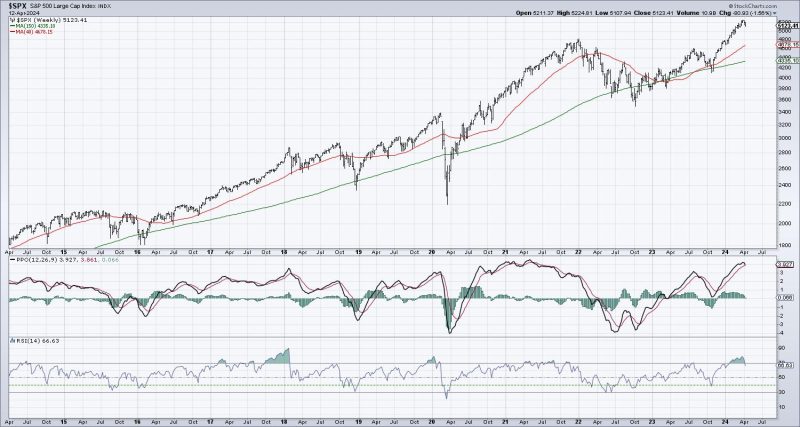The S&P 500 index has been under the spotlight in recent weeks as it continues to display major topping signals that indicate a potential shift in market dynamics. This trend has left many investors concerned about the future direction of the stock market and how it may impact their investment portfolios.
One of the key indicators that investors have been closely watching is the bearish divergence between the S&P 500 and the S&P 500 Equal Weight index. This divergence occurs when the market cap-weighted S&P 500 index is outperforming the equal weight index, which consists of all the components of the S&P 500 having an equal weighting. Historically, a bearish divergence between the two indices has often preceded market corrections or downturns, signaling that the market may be reaching a peak.
In addition to the bearish divergence, technical analysts have also noted the formation of a potential head and shoulders pattern on the S&P 500 chart. This pattern is characterized by three peaks, with the middle peak (the head) being higher than the other two peaks (the shoulders). The neckline of the pattern is drawn through the lows of the two shoulders, and a breakdown below this neckline is considered a bearish signal that could lead to further downside in the index.
Furthermore, market breadth indicators have shown signs of weakening, with fewer stocks participating in the market rally. This lack of broad-based participation could indicate that the current uptrend in the stock market is losing momentum and becoming increasingly vulnerable to a potential reversal.
Investors are also keeping a close eye on interest rates, as rising rates could put pressure on stock valuations and lead to a rotation out of equities and into safer assets like bonds. The Federal Reserve’s recent signaling of a potential interest rate hike in response to rising inflation has added to the uncertainty surrounding the stock market’s future performance.
While these topping signals are concerning, it’s important for investors to remember that market timing is notoriously difficult and that short-term market fluctuations are a normal part of investing. Diversification, risk management, and a long-term perspective are crucial elements of a sound investment strategy that can help investors navigate market volatility and potential downturns.
In conclusion, the S&P 500’s recent display of major topping signals warrants caution among investors, but it’s essential to approach market analysis with a well-rounded perspective and not make hasty decisions based on short-term indicators. By staying informed, diversified, and focused on long-term goals, investors can position themselves to weather market turbulence and achieve their investment objectives.

